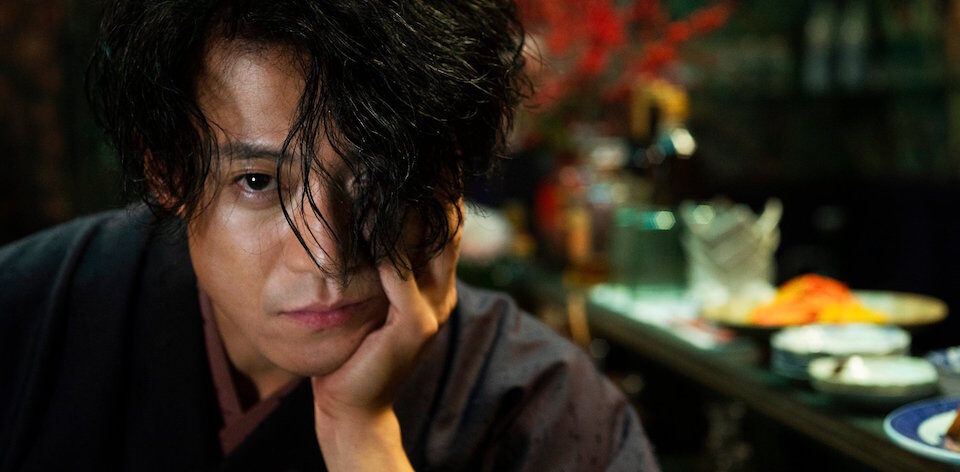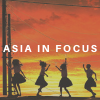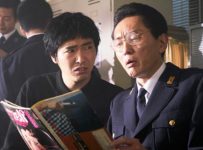It’s been a hell of a year for photographer and filmmaker Mika Ninagawa. After crafting the visually arresting Diner and releasing the limited series Followers to Netflix, this adaptation of Japan’s second best-selling novel in Japan (after Kokoro) might be her most unexpected left turn yet.
Osamu Dazai’s novel Ningen Shikkaku has been translated into a feature film at least once before as The Fallen Angel, along with being an anime mini-series, serving as inspiration for the anime Bungou Stray Dogs, and more recently as Human Lost, a truly bizarre nanotech-filled sci-fi version.
Despite being known for her outlandish and lavishly photographed hyperreality, Ninagawa tackles NO LONGER HUMAN (人間失格) like many of her forebears: as a the thinly veiled and fatalistic autobiography of Dazai.
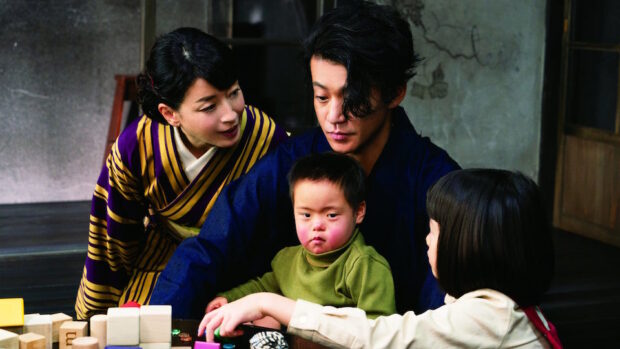
Dazai’s other work has been adapted into films such as Villon’s Wife, Shayo and Pandora’s Box, so filmmakers have been given ample opportunities to explore something more than the boozy womaniser who had a predilection towards death. Here Kaeko Hayafune’s script casts Osamu Dazai (Shun Oguri) as one of Japan’s most popular authors, but his inability to balance his married life, his extramarital affairs, and his alcoholism leads to self-destruction.
With a more literal translation of “Disqualified from Being Human,” the original book has largely been interpreted as being about the impact of post-War western influences on Japanese traditions. Yet this is like many of the film adaptations of Dazai’s work and far more concerned with the women in his life. In fact, the Japanese subtitle for Ninagawa’s film is ‘Osamu Dazai and three women.’
Which is solid and familiar ground for Ninagawa, whose stylish versions seedy affairs have filled the beautifully shot features Sakuran and Helter Skelter, for example. As we whip through one joyless tryst after the next, it’s all (in the words of one character) “booze, women, drugs and suicide.”
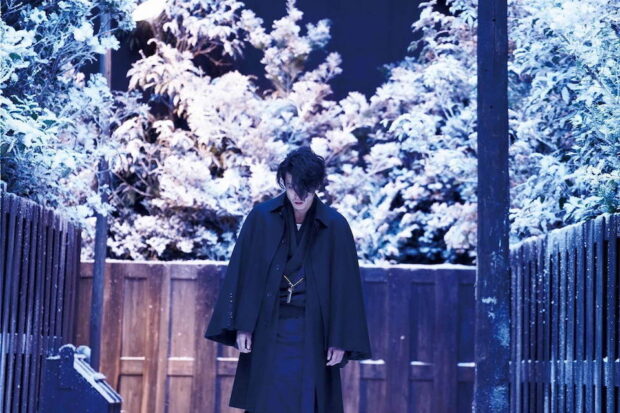
Cinematographer Ryuto Kondo (Shoplifters) replaces Ninagawa’s regular collaborator Daisuke Soma for a more realistically toned but no less stylish film. From bright red flower-filled fields to an opera bathed in purple light, Ninagawa drops her trademarks throughout this iconic narrative. There’s one remarkable moment of Dazai entering a red alley full of flywheels and laughing children. Later, the tone shifts blue as we see a literal and figurative deconstruction of the novelist’s life as he goes on a writing spree.
Nevertheless, the overall narrative approach is uninspired. Dazai is a figure who is often impossible to like, but in the original text his wry observations about human interactions come from someone who sees themselves as removed from the race. Oguri plays him as a straight floppy-haired cad, and any chance of exploring depression and alcoholism forgotten in a sea of sexy times.
Which makes this latest version of Ningen Shikkaku ultimately disappointing. If Ninagawa has been accused of style over substance, here it’s too little of either spread thinly over a well-worn tale. Indeed, Japanese audiences have probably see Dazai jump into rivers more times than Martha Wayne’s pearls hitting the pavement of Crime Alley. Yet there will certainly be more adaptations of this in the future, ones that should hopefully find fresher ways of marrying contemporary themes with Dazai’s life.
2019 | Japan | DIRECTOR: Mika Ninagawa | WRITER: Kaeko Hayafune | CAST: Shun Oguri, Yûdai Chiba, Tatsuya Fujiwara, Kengo Kôra | DISTRIBUTOR: Shochiku, Asmik Ace Entertainment | RUNNING TIME: 120 minutes | RELEASE DATE: 19 September 2010 (JPN), 30 April 2020 (Blu-ray)

